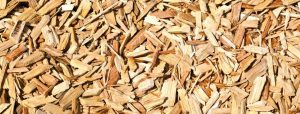Forests in Paraguay
Paraguay’s original vegetation consisted of more than 80 percent rainforest, which along with forests in Brazil, Argentina and Uruguay comprised a majority of the continent’s native forests. However, increased cutting in the 20th century destroyed most of these unique forests, transforming them into farmland.
At present, less than 10% of Paraguay is composed of natural and largely reclaimed forests. Although the cutting of trees has slowed, it has not been completely halted. Each year, approximately 30,000 to 40,000 hectares of forested land is destroyed. Cutting has gradually stopped as new laws take effect.
Paraguay’s Market Situation
Wood grows approximately four to five times faster in Paraguay’s subtropical climate zone than at the latitudes of Central Europe, where in cooler months there is practically no wood growth at all. Wage and management costs will remain significantly lower than in Central European forestry. Wood and wood chips as biomass are sold mainly in industrial areas surrounding the Paraguayan capital Asunción. Raw wood has become particularly desirable as biomass due to new laws.
Biomass
Biomass combustion generates process heat, which in the economic center of Paraguay is required by the different processing sectors there, such as drying grain, corn and soybeans, soy bean processing, alcohol and sugar manufacturing, coal and gas production, Coca-Cola bottlers and beer breweries, particle board and pulp producers… none of which can imagine a future without biomass.
It is probable to assume a reliable market situation due to these needs. Total biomass demand by these neighboring companies is currently about 30,000 tonnes a month.
Biomass has to be delivered continuously at a constant particleboard size and moisture content.

The most recent studies on timber consumption in Paraguay show the volume of legally harvested timber now exceeding consumption. The difference is presently covered by illegal harvesting of the remaining 700,000 forests and jungle. However, the largest consumers are no longer willing to buy illegally harvested timber because of sanctions. These companies’ needs are currently covered by forest plantations and imports, with current woodchip inventories falling slightly. In addition, the capacity of the wood-processing industry is constantly expanding due to increasing agricultural and industrial production. These factors will lead to an increased shortage of biomass stocks within a time frame of one to two years.
Timber
The demand for saw wood is similarly rising. Lumber companies have event been recently considering the relocation of production to the border area with Brazil, leading to shorter transport routes, faster processing and lower costs. This situation is advantageous for the reafforestation sector located in region surrounding the capital.
There are currently about 11,000 hectares of afforested land or land designated for afforestation registered in the greater Asunción area. Here S.A. Real Foresting Group manages 3,000 hectares of land, of which approximately 750,000 cubic meters of timber can be harvested in the first cycle, with the trend growing in subsequent years. Thanks to the constant accumulation of large quantities of lumber, long-term supply contracts can be signed with favorable conditions. Only one other company besides S. A. Real Foresting Group is sustainably reforesting more than 500 hectares in Paraguay, giving S. A. Real Foresting Group and S.A. Foresta SE an opportunity to become a market leader in the region, especially in the field of certified, high quality biomass and saw wood.



